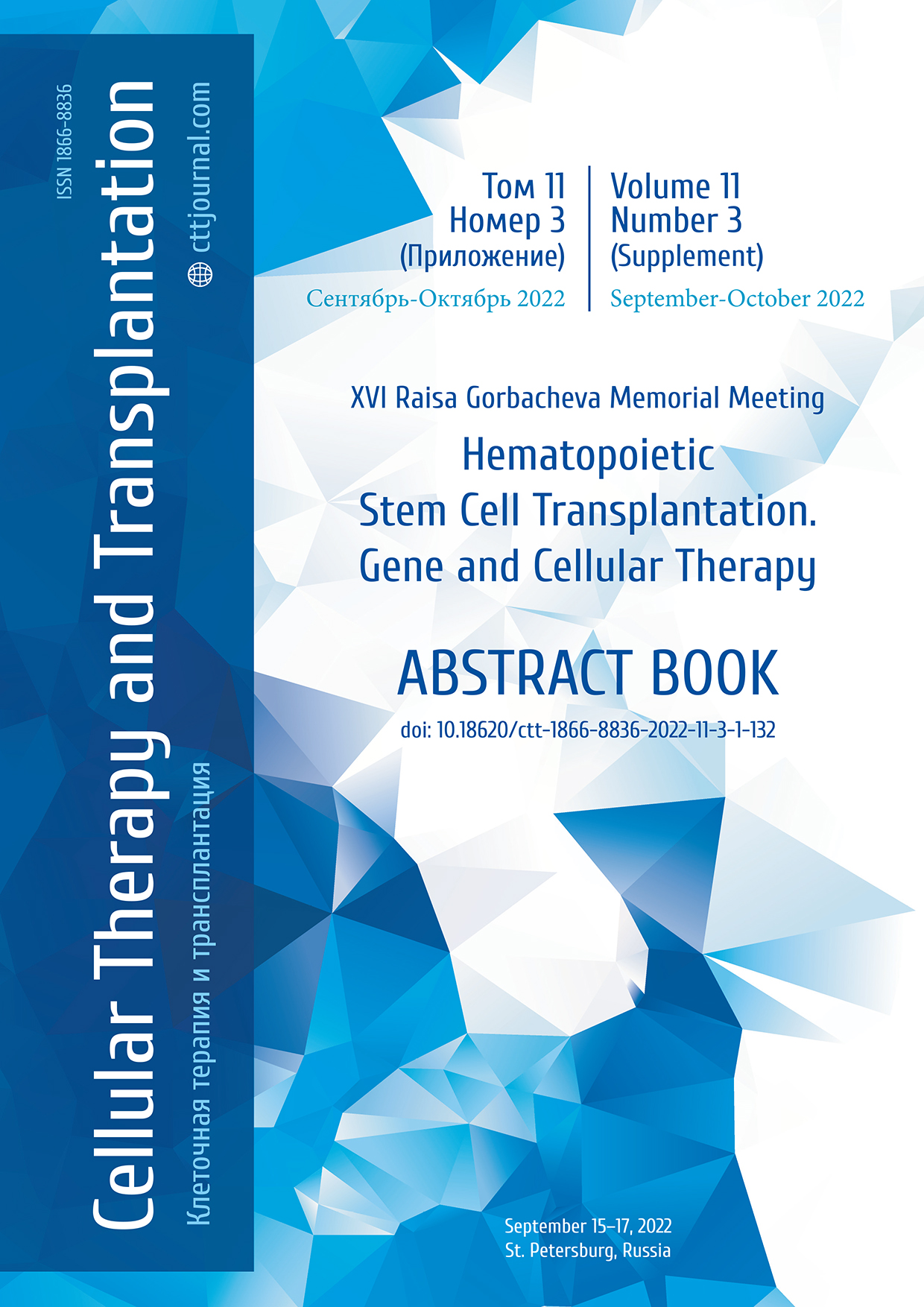AL-01. First experience in diagnosis and treatment of Philadelphia chromosome-like acute lymphoblastic leukemia
Kseniia S. Afanaseva, Polina V. Sheveleva, Olga V. Pirogova, Anna G. Smirnova, Olesya V. Paina, Ildar M. Barkhatov, Tatiana L. Gindina, Elena V. Babenko, Ivan S. Moiseev, Sergey N. Bondarenko, Ludmila S. Zubarovskaya, Alexander D. Kulagin
RM Gorbacheva Research Institute, Pavlov University, St. Petersburg, Russia
Contact: Dr. Kseniia S. Afanaseva, phone: +7 (921) 185-80-48, e-mail: afanasevaksenya11@gmail.com
Summary
Ph-like acute lymphoblastic leukemia (ALL) is a subtype of B-cell ALL with poor prognosis. Its prevalence in Russian population is unknown, mainly due to diagnostic challenges. At the same time, there is no standard approach to the diagnosis, and most diagnostic methods used are not financially and/or technically available in clinical laboratories. Moreover, an optimal treatment strategy, as well as relative role of JAK-inhibitors/tyrosine kinase inhibitors (TKI) and allo-HSCT is not defined so far. Here we present the screening diagnostic algorithm and description of examined and treated patients.
Materials and methods
Screening for Ph-like ALL is costly and time-consuming when applying direct search for distinct translocations with specific rearrangements and affected partner genes. Due to this reason, the screening algorithm used in our laboratory is based on determination of the signaling pathways involved in a particular case, in order to choose targeted therapy (TKI/JAK-inhibitors). The algorithm is based on measurement of TSLP levels on cell-surface of B-lymphoblasts using multicolor flow cytometry followed by screening for gene rearrangements by DNA-specific FISH probes (ABL1, ABL2, CSF1R, PDGFRB, JAK2, CRLF2), or qPCR (CRLF2). Sixty-five patients in active B-ALL disease at a median age of 20 (range 2-78 years), without exclusion criteria, were prospectively screened for Ph-like ALL from February 2020 to August 2022 according to the described diagnostic algorithm at the RM Gorbacheva Research Institute of Pediatric Oncology, Hematology and Transplantation.
Results and discussion
Most patients were examined in ≥1 relapse (n=37, 57%). According to the applied diagnostic algorithm, the incidence of Ph-like B-ALL was 21 of 65 cases (32.2%). The proportion of Ph-like patients in adult group (n=42) was 38%, versus 22% in pediatric group. CRLF2 gene rearrangement was the most frequent finding in the Ph-like cases (n=14, 66.6%), the non-CRLF2 group accounted for 10.7%. IKZF1 gene deletion was detected in 29% of Ph-like cases (n=6). Two patients with ABL1r and ABL2r were treated with dasatinib combined with chemotherapy/blinatumomab resulting into complete remission (CR). In 5 patients with CRLF2r, ruxolitinib was added to chemotherapy/blinatumomab/inotuzumab ozogamicin. Among them, 2 patients did not achieve CR and developed disease progression despite the combination therapy. Seven patients underwent allo-HSCT, only one of them remains in CR1. For the identified Ph-like group, the 5-year OS and RFS rates after ALL diagnosis were 52.2% (95%CI: 19.08%-85.32%), and 33.3% (95%CI: 6.65%-59.95%), respectively.
Conclusion
Diagnosis of Ph-like ALL may not rely on the definite gene expression profile, but rather on detecting aberrations of genes encoding the signaling pathways. A panel of FISH probes covering the most common translocations may be employed as a screening tool to define this unfavorable ALL subgroup. Noteworthy, higher detection of Ph-like cases in our adult cohort compared with literature data could result from selection of relapsed/refractory ALL cases in our center. At the same time, our limited clinical experience demonstrated potential resistance even to the combination therapy with JAK inhibitors. Despite increased OS levels in this high-risk subgroup of ALL patients due to the new therapeutic options, the high rates of late relapses remain the main challenge for this group of young patients. Apparently, Ph-like patients can benefit from allo-HSCT in CR1, but optimal strategies are yet to be determined.
Keywords
Acute lymphoblastic leukemia, Ph-like, tyrosine kinase inhibitors, ruxolitinib, allogeneic stem cell transplantation.


